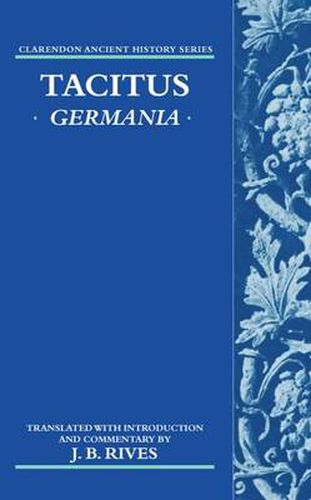Readings Newsletter
Become a Readings Member to make your shopping experience even easier.
Sign in or sign up for free!
You’re not far away from qualifying for FREE standard shipping within Australia
You’ve qualified for FREE standard shipping within Australia
The cart is loading…






The Germania of Tacitus is the most extensive account of the ancient Germans written during the Roman period, but has been relatively neglected in the scholarship of the English-speaking world: the last commentary appeared in 1938, and only a handful of studies have appeared since that time. In recent decades, however, there have been important scholarly developments that significantly affect our understanding of it. Ongoing archaeological work in western and central Europe has greatly increased our knowledge of the iron-age cultures in those regions, while new anthropological and literary approaches have called into question some of the traditional assumptions that shaped the use of this text as a historical source. This new commentary, together with the extensive introduction, provides a current and comprehensive guide to the relevant textual and archaeological evidence and also examines the methodological issues involved in the interpretation of this important work.
$9.00 standard shipping within Australia
FREE standard shipping within Australia for orders over $100.00
Express & International shipping calculated at checkout
The Germania of Tacitus is the most extensive account of the ancient Germans written during the Roman period, but has been relatively neglected in the scholarship of the English-speaking world: the last commentary appeared in 1938, and only a handful of studies have appeared since that time. In recent decades, however, there have been important scholarly developments that significantly affect our understanding of it. Ongoing archaeological work in western and central Europe has greatly increased our knowledge of the iron-age cultures in those regions, while new anthropological and literary approaches have called into question some of the traditional assumptions that shaped the use of this text as a historical source. This new commentary, together with the extensive introduction, provides a current and comprehensive guide to the relevant textual and archaeological evidence and also examines the methodological issues involved in the interpretation of this important work.